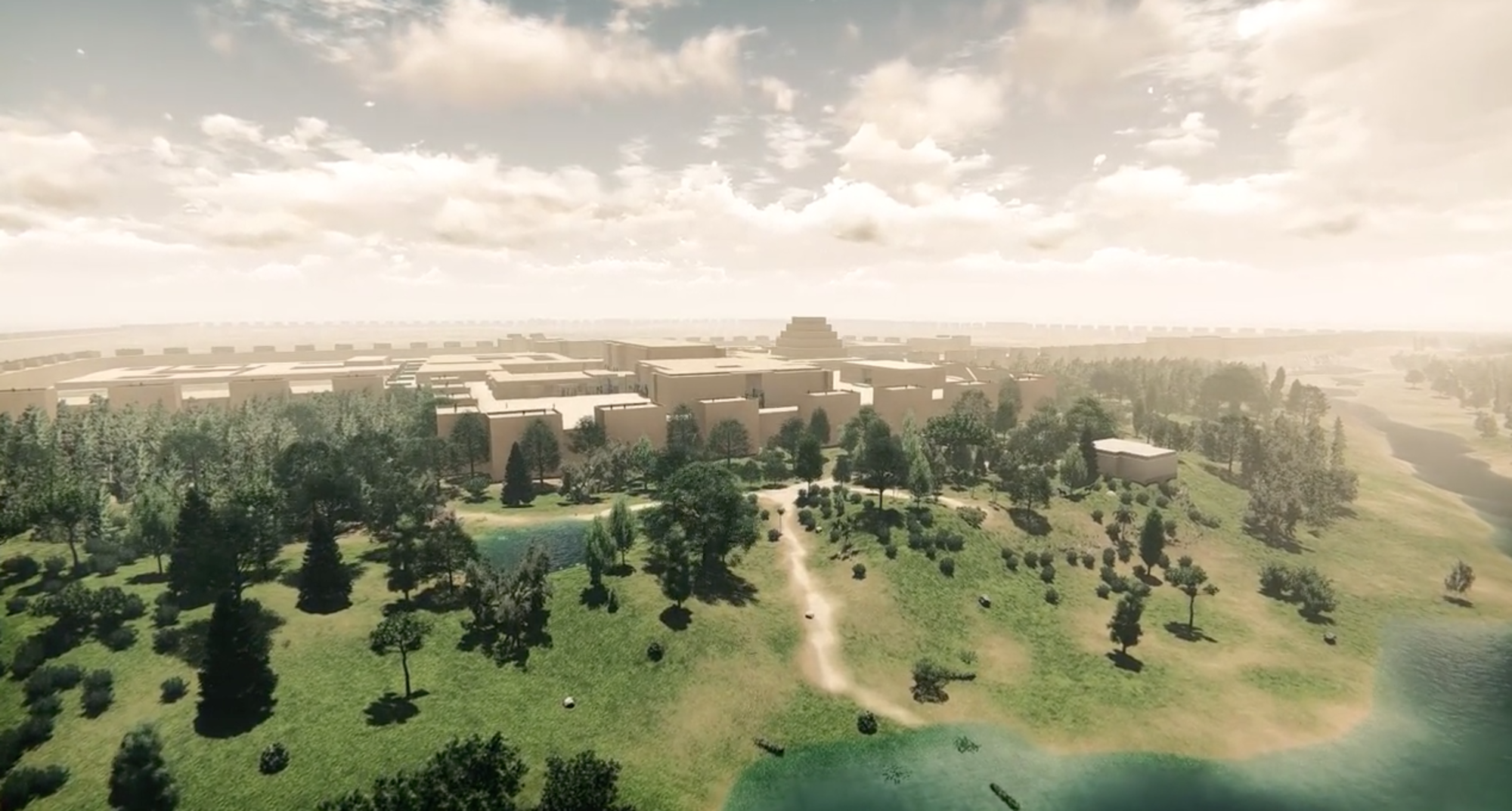
- Home
- Explore the site
- Assyria in the 1st millennium BCE.
- Nimrud, ancient Kalhu
An Assyrian capital
Formerly Kalhu (Calah in the Bible), Nimrud covered an area of 360 hectares. Built on a cliff on the banks of the Tigris River, the city enjoyed its period of greatest prosperity during the reign of Ashurnasirpal II, in the 9th century BCE. He had defensive ramparts built, along with nine temples and a palace to the northwest of the site. It was the first to have the typical layout of an Assyrian palace, later adopted in Khorsabad, with a public sector (babanu) and a private sector (bitanu). Numerous carved reliefs were discovered in the city.
Royal construction works
Other buildings were erected by the successors of Ashurnasirpal II: Shalmaneser III had an arsenal, the “Shalmaneser Fort”, built on the Tulul el-'Aza tell. The "Burnt Palace" was occupied by Sargon II at the beginning of his reign before he transferred the capital to Dur-Sharrukin. An important group of ivories was discovered in Nimrud along with carved reliefs and traces of painted decoration.
Excavations at Nimrud
The site was first excavated by the British archaeologist Sir Henry Layard from 1845 to 1851. In the 20th century, excavations resumed under the direction of Max Mallowan from 1949 to 1957, and then the Iraqi Department of Antiquities from 1959, which restored some of the buildings. Three royal tombs were excavated between 1988 and 1990, yielding 57 kg of gold jewellery and semi-precious stones. Foreign archaeological missions continued to work in the city from time to time. The terrorist group Islamic State caused considerable damage to the site in the spring of 2015.


